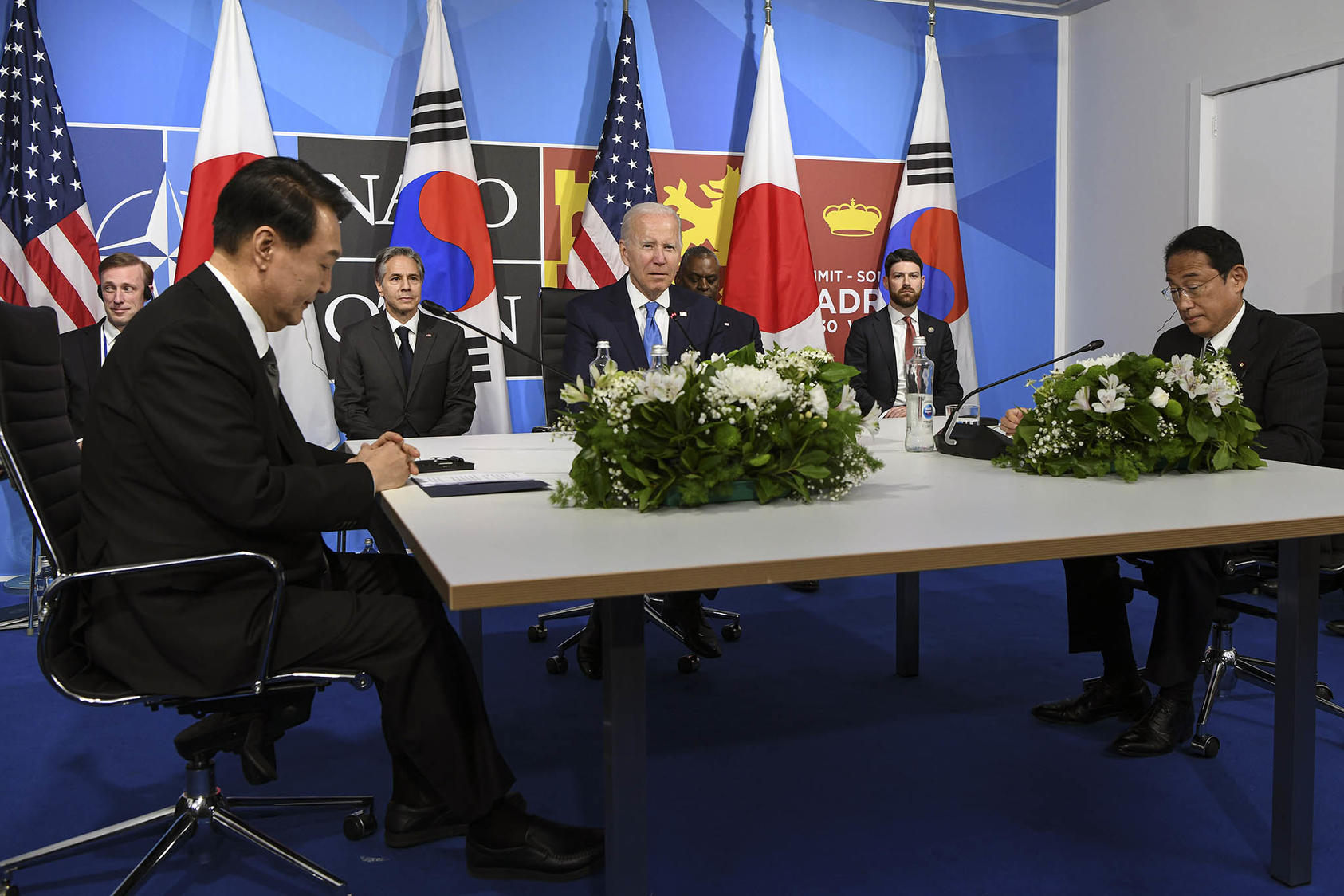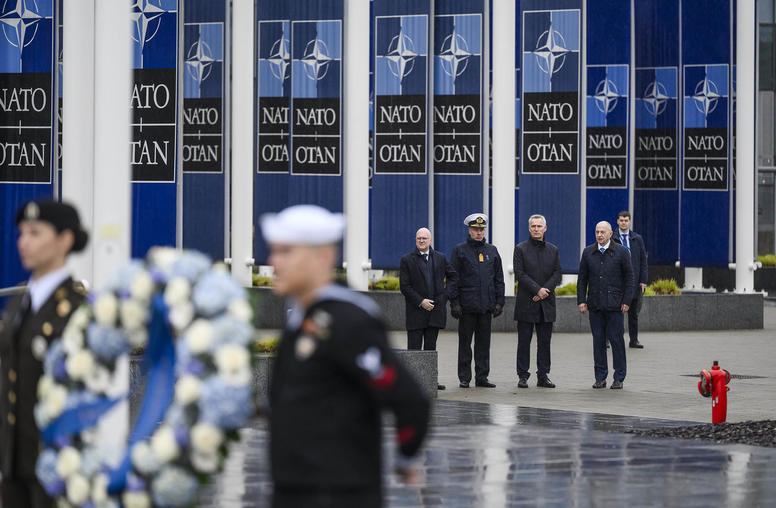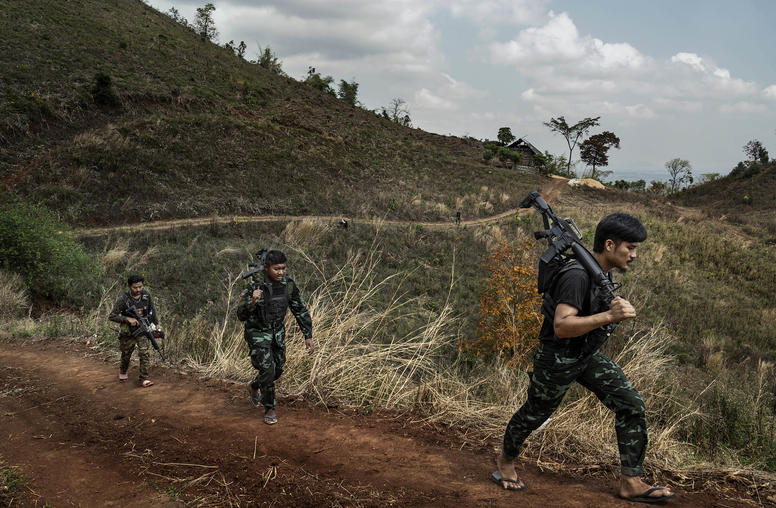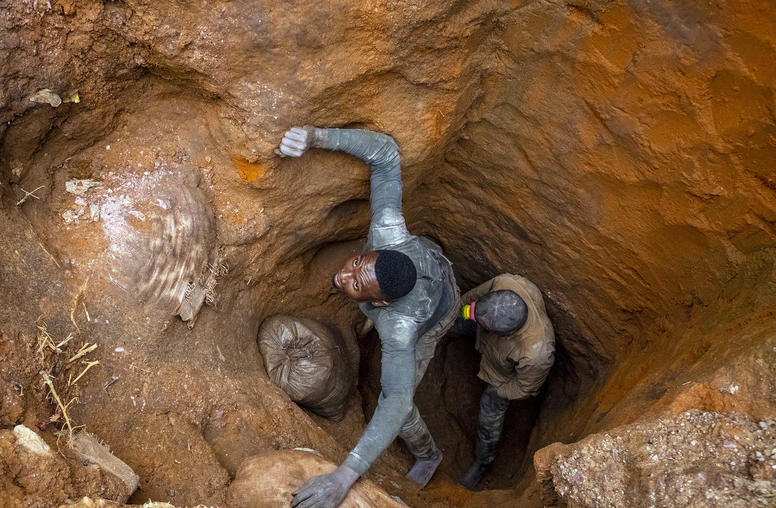Mended Ties Between Japan and South Korea Would Boost Regional Security
Amid challenges posed by North Korea and China, a thaw in tensions would expand opportunities for better security cooperation.
Relations between Japan and South Korea have soured in recent years after unresolved disputes re-emerged from acrimonious eras in their shared history. But the current leaders of the two East Asian countries have shown a willingness to rebuild ties. And amid North Korea’s nuclear rhetoric and China’s expanded aims in the region, South Korean Foreign Minister Park Jin’s recent trip to Japan serves as a welcomed first sign of a thaw in bilateral tensions. USIP’s Frank Aum looks at the state of South Korea-Japan relations, how they can be improved, and the geopolitical implications of continued tension amid the challenges posed by China and North Korea.

What is the state of relations between South Korea and Japan?
Japan and South Korea normalized relations in 1965. But since then, bilateral ties have been checkered due to unresolved historical issues stemming from the colonization and World War II periods. The two countries made strides during the 1990s, when the Japanese government made groundbreaking statements apologizing for Imperial Japan’s colonial rule and aggression and its involvement in running “comfort women” stations — a system that forced Korean women into sexual slavery for the Japanese military.
For many observers, the 1998 joint declaration by South Korean President Kim Dae-jung and Japanese Prime Minister Obuchi Keizo to forge a new “future-oriented” relationship represented the high point of bilateral relations.
However, efforts by Japan’s Liberal Democratic Party (LDP) to reverse the negative views of Imperial Japan have complicated aspirations for a new Seoul-Tokyo relationship. Critics argue that the nationalist faction of the LDP — which had been led by former Prime Minister Shinzo Abe until his recent assassination — is pursuing revisionism of Japan’s wartime past to soften what it views as a “masochistic” history. This has meant defending Japan’s colonization of Korea as legal at the time; honoring the war dead, including Class A war criminals, at Yasukuni Shrine in Tokyo; and supporting school textbook revisions that gloss over wartime atrocities.
By late 2018, relations between Seoul and Tokyo reached one of its worst periods when the South Korean Supreme Court ordered two Japanese companies to compensate forced Korean laborers. This ruling challenged the Japanese government’s view that the 1965 Claims Agreement had settled all claims “completely and finally.” Around the same time, then-South Korean President Moon Jae-in backed away from a 2015 bilateral deal to resolve the wartime “comfort women” issue, which Moon called flawed.
Japan retaliated by imposing export controls on chemicals used by South Korean semiconductor manufacturers and removing South Korea from its “whitelist” of preferred trading partners. South Korean responded with similar countermeasures, dropping Japan from its own whitelist and threatening termination of a bilateral military information sharing agreement.
How can South Korea-Japan relations be improved?
One difficulty when it comes to improving Japan-South Korea relations: There are different perspectives about what it means to improve relations. One view believes that improved relations are largely defined by strong state-to-state ties with robust security and economic cooperation, and that resolving historical and individual grievances should not be a prerequisite for enhanced cooperation. This side would point to the 1965 normalization treaties and the 2015 comfort women agreement as necessary deals that, while imperfect, helped the two countries build ties, overcome past differences and strengthen their mutual security and prosperity.
Another view believes that while unresolved historical and individual grievances should not foreclose better relations, they must be addressed satisfactorily sooner rather than later to realize true normalized ties, optimize bilateral and trilateral cooperation, and prevent recurring flareups.
In particular, those on this side believe disputes that are fundamental to the nature of the bilateral relationship — such as whether Japan’s colonization of Korea was illegal and how the suffering of victims should be compensated and commemorated — must be resolved appropriately in order for South Korea, Japan and their people to have the deep, psychological reconciliation that undergirds genuine improved relations.
Related to this view is the argument that the United States played a large role in expediting past faulty agreements, at the expense of Korean victims, to rehabilitate Japan and build a regional security network in the fight against communism. Overall, this line of thinking contends that Japan and South Korea remains mired in friction today, nearly 60 years after normalization, precisely because those past agreements did not fundamentally resolve the historical and individual grievances.
To improve relations, Seoul and Tokyo will likely need to adopt both approaches — pursuing security and economic cooperation where they can while also taking immediate steps to resolve the historical disputes.
Fortunately, both South Korean President Yoon Seok Yeol and Japanese Prime Minister Kishida Fumio have expressed interest in doing more than their immediate predecessors to build ties. In June, the Yoon administration announced the establishment of an advisory council that would seek ways to address the forced labor issue. The next month, South Korean Foreign Minister Park Jin told his Japanese counterpart Hayashi Yoshimasa that he would seek to resolve the forced labor issue before the South Korean Supreme Court makes a related ruling in August or September.
The most feasible solution might involve a joint fund concept that requires both South Korean and Japanese companies to compensate the forced labor victims. Alternatively, arbitration under the 1965 Claims Agreement offers a legally binding recourse. The forced labor dispute is the most pressing problem, but other historical issues such as the comfort women court cases and statues, the Dokdo/Takeshima territorial dispute, school textbook revisions, and even the ambiguity of the 1965 Claims Agreement will eventually need to be resolved bilaterally for strong relations to be sustained. Civil society exchanges and dialogues among academic, religious, cultural and non-governmental groups can help in this regard. In the meantime, Japan should immediately remove the export controls on semiconductor chemicals and each side should place the other back on its respective trading whitelists.
Strengthening U.S. alliances in the region is one of the Biden administration’s highest foreign policy priorities, and key to that is bridging the gap between South Korea and Japan. How can Washington help improve South Korea-Japan relations?
Washington is understandably careful to avoid the appearance of meddling or favoritism, but history shows that the United States for decades has played a strong role in shaping the course of events in the region.
The Biden administration has already articulated the importance of improving Japan-South Korea bilateral relations and U.S.-South Korea-Japan trilateral cooperation. President Biden visited Seoul and Tokyo in May to highlight the allies’ role in the U.S. Indo-Pacific Strategy and facilitated a trilateral summit with the three leaders on the sidelines of the NATO Summit in late June.
Similarly, Secretary of State Antony Blinken, Deputy Secretary Wendy Sherman and Defense Secretary Lloyd Austin have met with their South Korean and Japanese counterparts bilaterally and trilaterally to encourage greater cooperation on mutual security and economic goals, such as the climate crisis, global health security and COVID response, supply chain resilience, and a shared commitment to democracy and human rights.
Of course, it will take more than the United States getting the two sides into the same room to overcome decades of tensions. Given the sensitivity of this topic, official readouts from the various bilateral and trilateral meetings did not provide many specific details. However, it is likely that Washington is weighing in heavily to emphasize the importance of being “future-oriented” to address common threats like China and North Korea while still resolving historical issues in a mutually satisfactory way. The Biden administration may also be suggesting that the two countries focus on tangible “low hanging fruit” areas of cooperation, such as:
- Re-establishing the trilateral mechanism that then-Deputy Secretary of State Blinken convened during the Obama administration to coordinate on North Korea policy and other security issues.
- Resuming the trilateral military exercises, including missile warning and tracking and maritime interdiction, that stopped several years ago when bilateral tensions increased. Recently, the three countries announced that they would be conducting the Pacific Dragon trilateral missile search and tracking exercise in August and a quarterly missile warning exercise later this year.
- Reinvigorating the Defense Trilateral Talks to strengthen consultations related to security strategy and defense modernization.
- Strengthening cooperation on critical economic and technological areas, such as global health, supply chain resilience and climate change, particularly through the new Indo-Pacific Economic Framework for Prosperity.
At the same time, Washington may need to be more forward-leaning in calling on Japan to proactively address the historical grievances. For example, in 2014, then-U.S. President Barack Obama encouraged Japan to recognize the past “honestly and fairly” and called the comfort women tragedy a “terrible, egregious violation of human rights.” Additionally, acknowledging the United States’ historical role in complicating these grievances may help provide greater political flexibility in Tokyo for more assertive action. At the same time, Japan will need assurances from both the South Korean government and the victims involved about the finality of any agreement.
What types of cooperation are being hindered by poor bilateral relations? What are the geopolitical implications of strengthened Japan-South Korea relations and how will that further U.S. strategy in the region, particularly in regard to countering China?
Although South Korea and Japan may have many characteristics resembling a normal relationship — such as robust economic trade and strong people-to-people ties — they do not have the type of relationship that befits two democratic, U.S.-allied neighbors that share similar values, interests and concerns.
One major regional initiative that should be a natural forum of cooperation is the Quadrilateral Security Dialogue, or “Quad.” South Korea, with the 10th largest economy and seventh largest military in the world, is either a major or growing player in priority areas such as vaccines, critical and emerging technologies, climate change, infrastructure, space, cybersecurity, as well as in security and defense and trade and economics.
The conventional thinking was that South Korea, at least under the Moon Jae-in administration, was not interested in joining the Quad due to concerns about upsetting China. However, as the Yoon administration expresses interest in joining the multilateral mechanism, it is becoming clear that Washington and Tokyo are now the reluctant parties, partly out of fear that strained Seoul-Tokyo relations could upset the Quad apple cart. Of course, South Korea can contribute significantly through Quad-Plus working groups, but at some point, both the optics and reality of excluding South Korean participation at the leadership and agenda-setting level may perpetuate the cycle of bad feelings.
Even at the bilateral and trilateral level, South Korea and Japan could be doing better. Bilateral security cooperation is very limited, and Washington often must work as an intermediary through trilateral formats to bring the two sides together. The two countries do not have liaison offices at the U.S.-Korea Combined Forces Command or U.S. Forces Japan headquarters and do not send observers to bilateral exercises despite the significant roles each country would play in a regional contingency. And until recently, the trilateral missile warning and tracking exercises had been halted due to the bilateral tensions.
Optimal cooperation along the lines of a South Korea-Japan alliance may be wishful thinking given the historical baggage as well as each country’s unique situation. But the Biden administration’s hopes for integrated deterrence and a regional security network under its Indo-Pacific Strategy are severely hampered when its two strongest allies are not on good terms.



